#geology of poland
Text
It's official! Skalickie Skałki (Skalice Rocks) confirmed as the oldest rock outcrop in entire Poland. Made of sillimanite gneisses they were said to be even a billion years old, but current estimations are closer to 600 mln yrs.


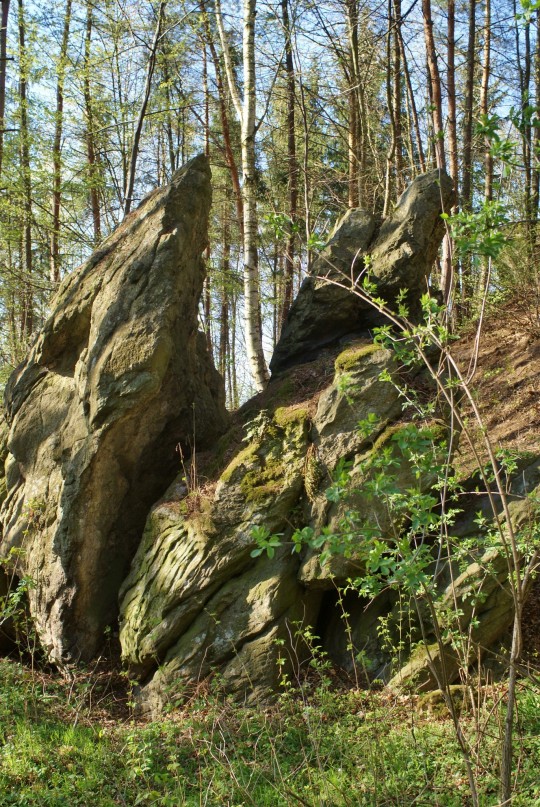
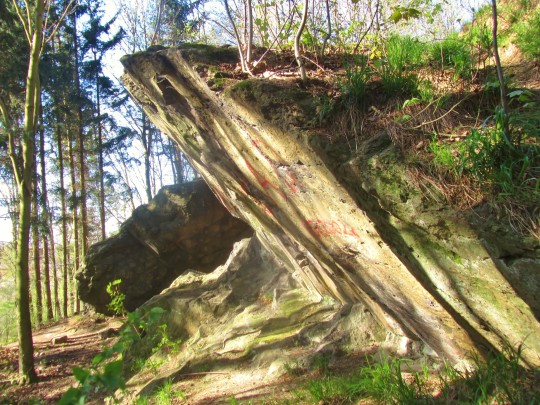

#My favourite spot#Skalice#wzgórza strzelińskie#lower silesia#geology#geotourism#geologia#poland#sudetes#geology of poland#my photography#rocks#sillimanite gneiss#proterozoic
296 notes
·
View notes
Text
Paleozoo enclosure based on the Owadów locality in Poland.
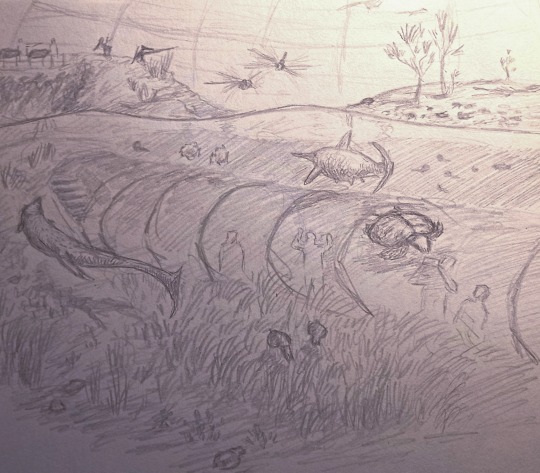
#biology#dinosaur#dinosaur art#dinosaurs#fossils#geology#mesozoic#palaeoart#palaeontology#paleoart#jurassic period#jurassic#solnhofen#poland#laggerstatte#paleozoo#sciart#pterosaur#ichthyosaur#metriorhynchid#crocodile#fish#zoo#prehistoric kingdom#jurassic park#dinosaur park#science
99 notes
·
View notes
Text
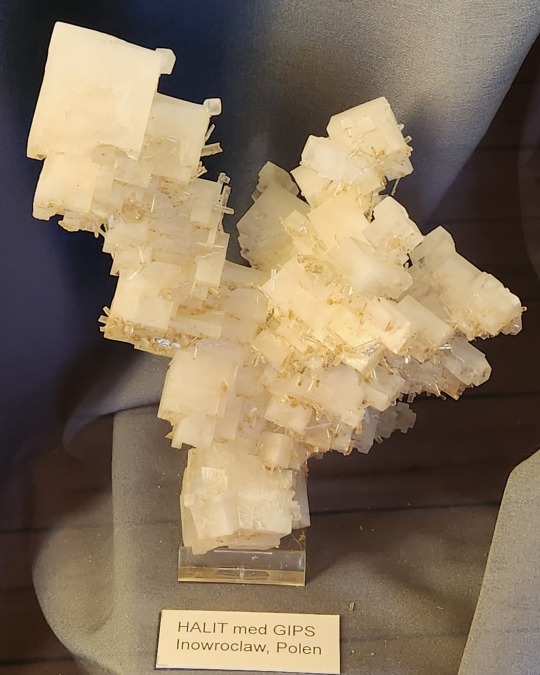
Halite
Natural History Museum of Denmark, Mineral Hall
#halite#geology#minerals#mineral hall#mineralology#poland#polish minerals#museums#museum#danish museums#natural history#natural history museums#natural history museum#natural history museum of denmark#danish natural history museum#copenhagen#denmark
113 notes
·
View notes
Text


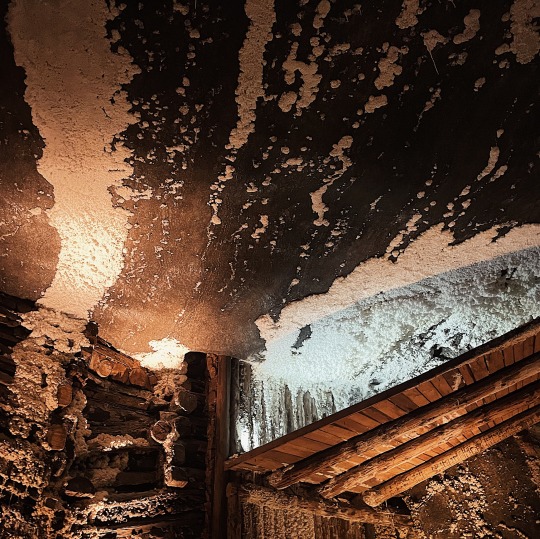

Wieliczka Salt Mine
February 2024
#poland#salt mine#geology#grunge#dark#dark aesthetic#church#cathedral#krakow#rocks#x#religion#catholic#crystals#Europe#travel
11 notes
·
View notes
Photo

Baryte
⚒ Location: Kopalnia Lubin, Lubin, KGHM, Dolny Śląsk, Poland
📸 More photos: https://minerali.rs/2022/02/04/baryte/
#baryte#crystals#minerals#geology#mineralogy#mineralcollection#gemology#geo#gems#crystal#mineral#rocks#science#earth#nature#natural stone#natural beauty#wonderful#poland
9 notes
·
View notes
Text

Found last year on the coast of Baltic Sea. I think it was Dziwnów!
0 notes
Link

This is how this Mexican woman experienced being an astronaut
For five days, Julieth Contreras Venegas experienced what it would be like to live on Mars. The mechatronics engineering student from the School of Engineering and Sciences at Tec de Monterrey’s Sonora Campus participated in the Mars Habitat project.
Together with four other students she explored a volcano, nursed a greenhouse, conducted research for future space missions, and much more.
The student tells Tec Review how she discovered that space engineering was her passion and mentions the upcoming international projects in which she will represent Mexico.
Analog astronaut: life as it could be
An analog astronaut is someone who lives in locations on Earth that simulate the conditions of humans living on the Moon or Mars.
Julieth was invited to live and survive under a strict routine based on diet, exercise, and research activities.
A day in the life of an astronaut
The daily routine consisted of getting up at six in the morning, getting dressed, keeping records of measurements such as blood pressure and weight, exercising (in addition to other activities such as coloring mandalas or painting planets), going to pick fruit and vegetables in the garden to prepare breakfast, lunch, and dinner and then completing an assigned task.
This was how 20-year-old, Julieth Contreras Venegas spent a typical day on the Mars Habitat analog space station, on mission 121, which took place from May 26 to 31 of this year.
During the week of the experience, each crew member had an assigned task to coordinate with the others.
Julieth was the director of research projects.
While carrying out “extravehicular activities” which were what they called the expeditions outside the station, they had to go out with a special suit and helmet.
They walked for two hours to explore the Pico do Cabugi volcano, taking rock samples to analyze its composition. They visited Lake Ceres, conducted astronomical and satellite observations, helped tend to the farm, and contributed to the construction of a new shelter for future crew members.

As part of their tasks, the crew helped build a shelter, putting up doors, solar panels, and walls. Spending almost all day on that activity, they made it back to the station by dinner time
International congress participation
As the research project director at Mars Habitat, Julieth –along with her colleagues– proposed topics that contribute knowledge to space exploration for real missions.
They were able to do some research, as there was a library and internet access at the station. The topics proposed included one on horticulture, another on the relevance of missions and how space technology contributes to improving life on Earth, and another on how people’s perception of the planet changes when they travel to space.
If approved, the Tec de Monterrey student will attend the International Astronautical Congress in Paris, France, in September to present her research results.
Simulating the Moon’s conditions
Julieth Contreras was also selected to participate in a mission that will simulate living conditions on the Moon. It’s the Analogue Astronaut Training Center in Krakow, Poland.
In this habitat, all the activities will be inside the station, since both the CO2 levels and the temperature will be similar to the lunar environment.
“At the end of the mission, some experiments will be carried out on flights that achieve microgravity. It’s great to be able to test your research projects in those conditions.”
Vocation for space engineering
Julieth said that when she was a child, she played at being her dolls’ teacher, explaining science topics to them and telling them that they had to get on a spaceship to save humanity because life on Earth was no longer viable.
Mathematics and physics were always easy for her, so she knew that she wanted to study something related to science since middle school, but along the way she encountered some challenges. She also switched from studying medicine.
“I attended classes for three weeks, but I decided to switch to mechatronics. Studying electronics, mechanics, and programming has helped me a lot.”
After graduating, she wants to study for a graduate degree in aerospace engineering.
She dedicates this message to women who want to be engineers:
“Find the path you like the most and that makes you happy. “There will always be challenges, but don’t let them change your goals. Find a way to turn the situation around. If you are persistent, you will reach the goal.”
#🇲🇽#STEM#Julieth Contreras Venegas#mexican#astronomy#mars#School of Engineering and Sciences#Tec de Monterrey#mexico#sonora#Mars Habitat project#mechatronics engineering#Tec Review#astronaut#Pico do Cabugi volcano#geology#Lake Ceres#euorpe#poland#Analogue Astronaut Training Center
0 notes
Text
Everything You Need to Know About Crystals: Chrysoprase
The Stone of Venus

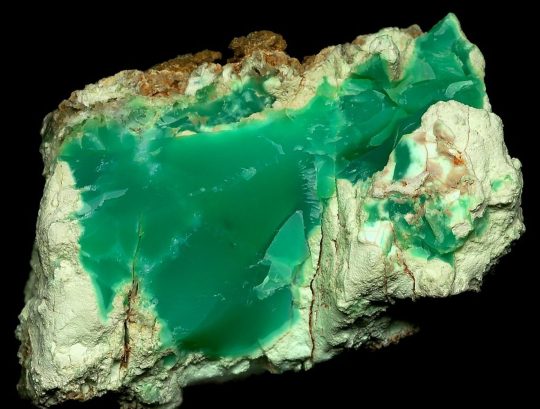

Requested by @acovenoftwo
Chemical Formula: SiO2
Color: Apple green, lemon
Rarity: Easy to obtain as a tumble stone, finer quality is expensive
Hardiness: 7
Type: Chalcedony
Chakra Association: Heart and Solar Plexus
Deities: Venus
Birthstone: May
Astrological Signs: Gemini, Taurus
Element: Water
Planet: Mercury
Origin: Formerly Poland, Now Australia, Brazil, Madagascar, Russia, Tanzania, USA
Powers: Encouraging development, Compassion, Tolerance, Growth, Forgiveness, Connection to Nature
Crystals It Works Well With: Mountain “jade”, Tourmaline, Smokey Quartz
How It is Created: Chrysoprase is a type of chalcedony quartz with a microcrystalline structure. Its color comes from nickel deposits, and it can be found in pale shades through to brighter green. Raw pieces have a granular appearance, similar to pieces of coconut, and a waxy sheen when polished.
History: Chrysoprase, called Stone of Venus because in antiquity it represented the goddess of divine love, the famous Venus, is a magnificent apple-green nickeliferous chalcedony belonging to the family of microcrystalline quartz. The ancient Egyptians also used chrysoprase for practical purposes such as sealing letters, but they would also wear pendants, amulets and other jewelry made of chrysoprase. For hundreds of years, the only major source of chrysoprase was a region of southwestern Poland between the Czech Republic and Germany, formerly known as Lower Silesia. This area has a complex geology and is extremely rich in all kinds of mineral deposits, including gold, silver, serpentine, quartz, marble, granite, alabaster—and chrysoprase. Stone artifacts from as far back as the Iron Age show the long history of Silesian carving and masonry. In the eighteenth century, Frederick II, King of Prussia (now part of Germany), conquered Lower Silesia. In particular, he wanted its deposits of green chrysoprase, which he used to decorate the halls of his favorite palace at Potsdam near Berlin.
What It Can Do:
Known as the healer of the heart space and helps connect you with infinite supply of compassion and love
Supports cardiac health and provides a centered peace
Helps people suffering from melancholy and manifests optimism and joy
Can be placed by homegrown herbs and vegetables to boost production
Perfect to artist as it increases creativity and talent
Encourages fidelity, forgiveness, compassion, and nonjudgmental thinking in relationships, while banishing greed and selfishness
Helps with inducing deep meditative states and promotes the love of truth
Calming and nonegotistical, creating openness in new situations
Stimulates fluent speech and mental dexterity, preventing you from speaking out unthinkingly in anger
Lifts oppressive and recurrent images, preventing nightmares, especially in children
Is said to detoxify heavy metals in one’s body and stimulate liver function
Is said to enhance fertility, reverse effects of infertility that are caused by infection and guard against STIs
Increases the absorption of Vitamin C
How to Get the Best Out Of: Wear as a necklace, bracelet, earrings or even use it in an elixir. Carrying chrysoprase for long periods attunes to the devic realm, a band of frequency found present on Earth which can connect you to nature and the planet directly
How to Cleanse and Charge: Can be cleansed briefly under running water then recharged overnight among a host of rock crystals for a few weeks. Cleanse during a rain shower for optimized cleansing,
Crystal Grid:
Healing for Children (Nightmares)
Shape: Fruit of Life
• 6 “issue” or calming stones
• 4 grounding crystals
• 2 light-bringing crystals
1. Hold your crystals in your hands and state your intention for the grid.
2. Lay the central keystone to represent your child.
3. Lay six crystals around the keystone to assist with the challenge or issue. (These crystalscan either represent a single issue, or different ones—whichever feels best to you. However,it may be more effective to address separate issues by laying individual grids.)
4. Lay four grounding crystals to anchor the grid at each corner of the “square.”
5. Lay a light-bringing crystal at the top and bottom.
6. Leave in place until the issue or issues have been resolved, remembering to cleanse thegrid regularly.
Crystals to use: Chrysoprase, Amethyst, Prehnite, Bloodstone
Sources
#witchblr#witch community#witchcraft#paganblr#occulltism#nature#witchcraft 101#crystal witch#crystals#crystal grid#witch books#witch resources#requested#chrysoprase#geology#rocks#venus
77 notes
·
View notes
Text
The Ig Nobel Prize, for scientific research that makes people laugh and then makes them think. This year's winners!
CHEMISTRY and GEOLOGY PRIZE [POLAND, UK]
Jan Zalasiewicz, for explaining why many scientists like to lick rocks.
REFERENCE: “Eating Fossils,” Jan Zalasiewicz, The Paleontological Association Newsletter, no. 96, November 2017. Eating fossils | The Palaeontological Association (palass.org)
WHO TOOK PART IN THE CEREMONY: Jan Zalasiewicz
LITERATURE PRIZE [FRANCE, UK, MALAYSIA, FINLAND]
Chris Moulin, Nicole Bell, Merita Turunen, Arina Baharin, and Akira O’Connor for studying the sensations people feel when they repeat a single word many, many, many, many, many, many, many times.
REFERENCE: “The The The The Induction of Jamais Vu in the Laboratory: Word Alienation and Semantic Satiation,” Chris J. A. Moulin, Nicole Bell, Merita Turunen, Arina Baharin, and Akira R. O’Connor, Memory, vol. 29, no. 7, 2021, pp. 933-942. doi.org/10.1080/09658211.2020.1727519
WHO TOOK PART IN THE CEREMONY: Chris Moulin, Akira O’Connor
MECHANICAL ENGINEERING PRIZE [INDIA, CHINA, MALAYSIA, USA]
Te Faye Yap, Zhen Liu, Anoop Rajappan, Trevor Shimokusu, and Daniel Preston, for re-animating dead spiders to use as mechanical gripping tools.
REFERENCE: “Necrobotics: Biotic Materials as Ready-to-Use Actuators,” Te Faye Yap, Zhen Liu, Anoop Rajappan, Trevor J. Shimokusu, and Daniel J. Preston, Advanced Science, vol. 9, no. 29, 2022, article 2201174. doi.org/10.1002/advs.202201174
WHO TOOK PART IN THE CEREMONY: Te Faye Yap and Daniel Preston
PUBLIC HEALTH PRIZE [SOUTH KOREA, USA] Seung-min Park, for inventing the Stanford Toilet, a device that uses a variety of technologies — including a urinalysis dipstick test strip, a computer vision system for defecation analysis, an anal-print sensor paired with an identification camera, and a telecommunications link — to monitor and quickly analyze the substances that humans excrete.
REFERENCE: “A Mountable Toilet System for Personalized Health Monitoring via the Analysis of Excreta,” Seung-min Park, Daeyoun D. Won, Brian J. Lee, Diego Escobedo, Andre Esteva, Amin Aalipour, T. Jessie Ge, et al., Nature Biomedical Engineering, vol. 4, no. 6, 2020, pp. 624-635. doi.org/10.1038/s41551-020-0534-9
REFERENCE: “Digital Biomarkers in Human Excreta,” Seung-min Park, T. Jessie Ge, Daeyoun D. Won, Jong Kyun Lee, and Joseph C. Liao, Nature Reviews Gastroenterology and Hepatology, vol. 18, no. 8, 2021, pp. 521-522. doi.org/10.1038/s41575-021-00462-0
REFERENCE: “Smart Toilets for Monitoring COVID-19 Surges: Passive Diagnostics and Public Health,” T. Jessie Ge, Carmel T. Chan, Brian J. Lee, Joseph C. Liao, and Seung-min Park, NPJ Digital Medicine, vol. 5, no. 1, 2022, article 39. doi.org/10.1038/s41746-022-00582-0
REFERENCE: “Passive Monitoring by Smart Toilets for Precision Health,” T. Jessie Ge, Vasiliki Nataly Rahimzadeh, Kevin Mintz, Walter G. Park, Nicole Martinez-Martin, Joseph C. Liao, and Seung-min Park, Science Translational Medicine, vol. 15, no. 681, 2023, article eabk3489. doi.org/10.1126/scitranslmed.abk3489
WHO TOOK PART IN THE CEREMONY: Seung-min Park
COMMUNICATION PRIZE [ARGENTINA, SPAIN, COLOMBIA, CHILE, CHINA, USA]
María José Torres-Prioris, Diana López-Barroso, Estela Càmara, Sol Fittipaldi, Lucas Sedeño, Agustín Ibáñez, Marcelo Berthier, and Adolfo García, for studying the mental activities of people who are expert at speaking backward.
REFERENCE: “Neurocognitive Signatures of Phonemic Sequencing in Expert Backward Speakers,” María José Torres-Prioris, Diana López-Barroso, Estela Càmara, Sol Fittipaldi, Lucas Sedeño, Agustín Ibáñez, Marcelo L. Berthier, and Adolfo M. García, Scientific Reports, vol. 10, no. 10621, 2020. doi.org/10.1038/s41598-020-67551-z
WHO TOOK PART IN THE CEREMONY: María José Torres-Prioris, Adolfo García
MEDICINE PRIZE [USA, CANADA, MACEDONIA, IRAN, VIETNAM]
Christine Pham, Bobak Hedayati, Kiana Hashemi, Ella Csuka, Tiana Mamaghani, Margit Juhasz, Jamie Wikenheiser, and Natasha Mesinkovska, for using cadavers to explore whether there is an equal number of hairs in each of a person’s two nostrils.
REFERENCE: “The Quantification and Measurement of Nasal Hairs in a Cadaveric Population,” Christine Pham, Bobak Hedayati, Kiana Hashemi, Ella Csuka, Margit Juhasz, and Natasha Atanaskova Mesinkovska, Journal of The American Academy of Dermatology, vol. 83, no. 6, 2020, pp. AB202-AB202. doi.org/10.1016/j.jaad.2020.06.902
WHO TOOK PART IN THE CEREMONY: Christine Pham, Natasha Mesinkovska, Margit Juhasz, Kiana Hashemi, Tiana Mamaghani
NUTRITION PRIZE [JAPAN]
Homei Miyashita and Hiromi Nakamura, for experiments to determine how electrified chopsticks and drinking straws can change the taste of food.
REFERENCE: “Augmented Gustation Using Electricity,” Hiromi Nakamura and Homei Miyashita, Proceedings of the 2nd Augmented Human International Conference, March 2011, article 34. doi.org/10.1145/1959826.1959860
WHO TOOK PART IN THE CEREMONY: Homei Miyashita, Hiromi Nakamura
EDUCATION PRIZE [CHINA, CANADA, UK, THE NETHERLANDS, IRELAND, USA, JAPAN]
Katy Tam, Cyanea Poon, Victoria Hui, Wijnand van Tilburg, Christy Wong, Vivian Kwong, Gigi Yuen, and Christian Chan, for methodically studying the boredom of teachers and students.
REFERENCE: “Boredom Begets Boredom: An Experience Sampling Study on the Impact of Teacher Boredom on Student Boredom and Motivation,” Katy Y.Y. Tam, Cyanea Y. S. Poon, Victoria K.Y. Hui, Christy Y. F. Wong, Vivian W.Y. Kwong, Gigi W.C. Yuen, Christian S. Chan, British Journal of Educational Psychology, vol. 90, no. S1, June 2020, pp. 124-137. doi.org/10.1111/bjep.12549
REFERENCE: “Whatever Will Bore, Will Bore: The Mere Anticipation of Boredom Exacerbates its Occurrence in Lectures,” Katy Y.Y. Tam, Wijnand A.P. Van Tilburg, Christian S. Chan, British Journal of Educational Psychology, epub 2022. doi.org/10.1111/bjep.12549
WHO TOOK PART IN THE CEREMONY: Christian Chan, Katy Y.Y. Tam, Wijnand A.P. Van Tilburg
PSYCHOLOGY PRIZE [USA]
Stanley Milgram, Leonard Bickman, and Lawrence Berkowitz for experiments on a city street to see how many passersby stop to look upward when they see strangers looking upward
REFERENCE: “Note on the Drawing Power of Crowds of Different Size,” Stanley Milgram, Leonard Bickman, and Lawrence Berkowitz, Journal of Personality and Social Psychology, vol. 13, no. 2, 1969, pp. 79-82. psycnet.apa.org/doi/10.1037/h0028070
WHO TOOK PART IN THE CEREMONY: Len Bickman
PHYSICS PRIZE [SPAIN, GALICIA, SWITZERLAND, FRANCE, UK]
Bieito Fernández Castro, Marian Peña, Enrique Nogueira, Miguel Gilcoto, Esperanza Broullón, Antonio Comesaña, Damien Bouffard, Alberto C. Naveira Garabato, and Beatriz Mouriño-Carballido, for measuring the extent to which ocean-water mixing is affected by the sexual activity of anchovies.
REFERENCE: “Intense Upper Ocean Mixing Due to Large Aggregations of Spawning Fish,” Bieito Fernández Castro, Marian Peña, Enrique Nogueira, Miguel Gilcoto, Esperanza Broullón, Antonio Comesaña, Damien Bouffard, Alberto C. Naveira Garabato, and Beatriz Mouriño-Carballido, Nature Geoscience, vol. 15, 2022, pp. 287–292. doi.org/10.1038/s41561-022-00916-3
WHO TOOK PART IN THE CEREMONY: Bieito Fernandez Castro, Beatriz Mouriño-Carballido, Alberto Naveira Garabato, Esperanza Broullon, Miguel Gil Coto
27 notes
·
View notes
Text
Geology Facts with Kail!
Ok, so I'm very likely to not be the only one who saw this, but the petrified orange that Stede finds and ends up splitting with his daughter? Not a real petrified orange (unsurprising I'm sure). But it *is* super cool still because it is a Thunder Egg!
Now what is a Thunder Egg? From a geology standpoint, they are a type of agate that resembles a geode (agate being a solid rock thing and geode usually being the sparkly hollow ones). These, like all agates, can actually be traced back to the bed/area they were found in based on appearance (and probably chemical/science stuff). If I had to guess the one used in the show is from is actually from Canada (based on some pictures and the fact that the thunder egg I own is Canadian and looks quite close).
Thunder Eggs can also be found, in two major locations in Australia, Germany, Poland, Romania, Ethiopia, Argentina, Mexico, Turkey, and one specific mountain in France. And most famously (according to google) you can find several different types of Thunder Eggs in the state of Oregon, US. Some of these ones are named by the ranch they were found in because they vary so much between locations there.
Anywho, here's my Thunder Egg as proof I think I know what I'm talking about 💜
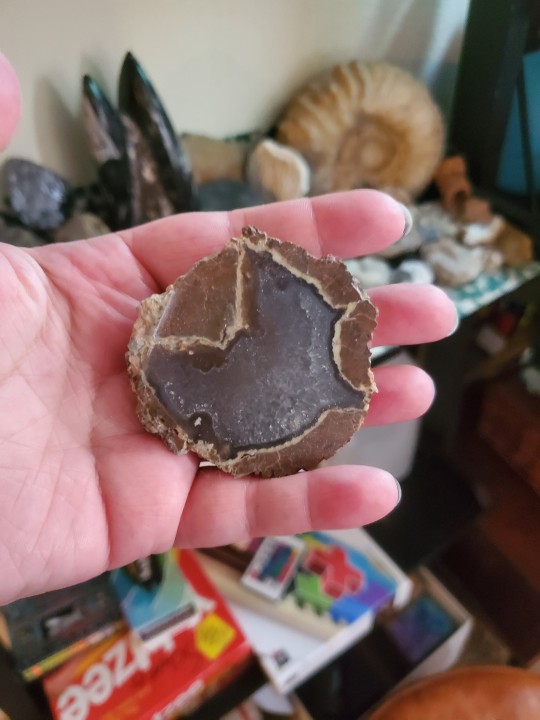
With love from a fangirl and a rock nerd
#ofmd#renew our flag means death#our flag means death#orange episode#petrified orange#geology#rocks are cool#thunder egg#rock facts#imtherain#lackofpamcakes
19 notes
·
View notes
Text
🎓 World Professors AU 🎓

Just thought it’d be fun to imagine what topics these characters would teach if they were university, college, or independent professors. And I made this AU to put off of doing chores....
🧮 Mathematics - Turkey
🚗 Engineering - Germany
🤖 Robotics - Japan
🛫 Aviation - America
💰 Banking - Switzerland
📈 Economics - Netherlands
🌱 Agribusiness - Ireland
🌁 Architecture - Hungary
👨🚀 Astronomy - Russia
🧭 Geography - Portugal
🐬 Marine Biology - Seychelles
🦋 Wildlife Conservation - New Zealand
🌋 Geology - Iceland
💊 Pharmacology - Canada
🐾 Veterinary Studies - Australia
🐘 Zoology - Thailand
🌾 Agriculture - Ukraine
⛵ Maritime Studies - England
🎨 Visual Arts - Italy & Romano
🎵 Music Theory - Austria
🕺 Dance - Korea
👗 Fashion - France
📸 Photography - Philippines
🪑 Interior Design - Sweden
🍜 Culinary Studies - India
🍺 Distilling - Scotland
🌺 Horticulture - Macau
👙 Tourism - Spain
📊 Marketing - Slovakia
☕ Hospitality - Monaco
💻 Computer Sciences - Estonia
🏭 Manufacturing - Malaysia
🚧 Construction - Indonesia
🔨 Blacksmithing - Denmark
🎊 Event Management - Vietnam
⚽ Athletics - Cameroon
🌿 Traditional Chinese Medicine - China
📚 Library Sciences - Prussia
🐴 Competitive Chess - Latvia
📱 Social Media Studies - Poland
👣Anthropology - Bulgaria
👶 Child Psychology - Finland
📜 Philosophy - Greece
⏳ Archaeology - Egypt
🌍 Global Politics - Belgium
🛐 World Religions - Singapore
🗽 International Law - Lithuania
🦸♀️ Women's Studies - Czechia
🔮 Occult Studies - Romania
🧙♂️ Mythology - Norway
💀 Thanatology - Belarus
🐉 Cryptozoology - Wales
~~~
So, yeah! I did my best to include as many characters as possible and have a wide-range of interesting subjects. It was hard picking subjects for Poland, Latvia, Slovakia, and a few others. Btw, if I missed your favourite character, I’m super sorry! Please feel free to expand on this, reblog, and share which classes you’d like to take, or who you’d want as your professor. I’d love to hear your thoughts! ❤
#hetalia#hetalia au#aph#hws#hetalia world series#hetalia world twinkle#hetalia world stars#gakuen hetalia#my writing
49 notes
·
View notes
Text


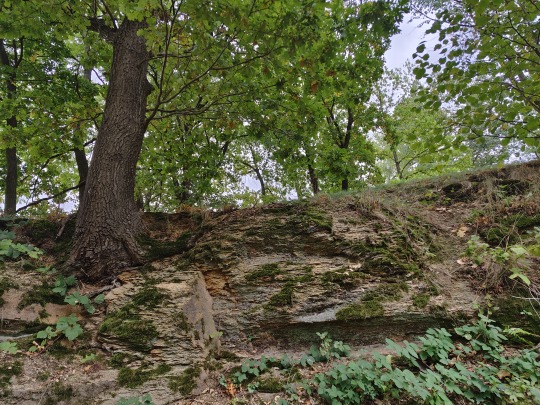

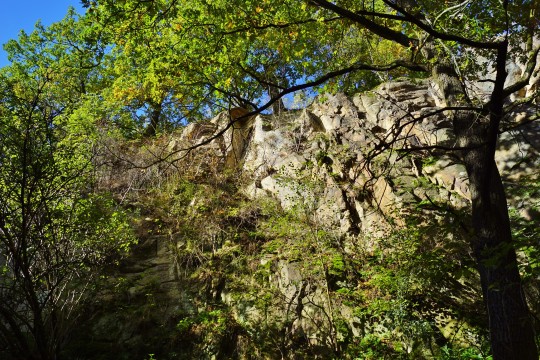

Bagieniec village lies on the line of the Tertiary Bagieniec-Paszowice fault, which is the north-western border of the Strzegom - Sobótka granite massif. Strzelnica hill, towering over the village, is the raised wing of this fault, built of the Paleozoic granite intrusion of Carboniferous age. The depressed part in which Bagieniec is located belongs to the Roztoka-Mokrzeszów Graben, filled with sediments of the Tertiary and Quaternary period.

The outcrops of Strzelnica hill show granite rocks called the Strzegom granite and products of their weathering.
#geology#lower silesia#geotourism#poland#geologia#geology of poland#carboniferous#granite#Równina świdnicka
17 notes
·
View notes
Note
Please show us your nesting doll and polish fashion doll 🙏 (if you want)
(in reference to this post)
My painted ladies! The biggest matroyshka is about 7.5" tall and they get all the way down to about 1/4 of an inch. They were a gift from my aunt and uncle when I was little; my uncle was a geology professor (retired) and used to go to Poland once a year for something career related. They'd bring back matching cultural gifts for me and my cousins every time, so each of my cousins got nesting doll sets of the same quality and size but with different designs. I suspect I'm the only one of us who still has theirs.

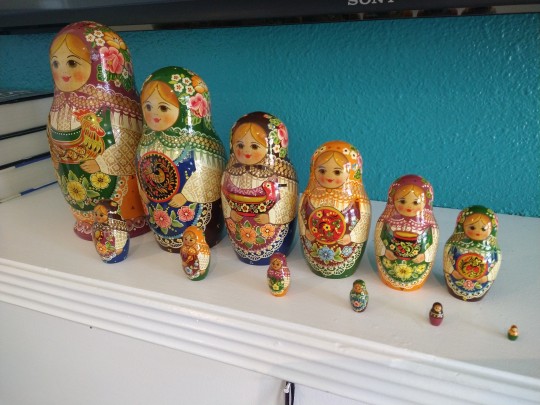
I haven't been able to find the fashion doll, so I assume as the most humanoid, articulated doll in the house, she's begun the hunt.
8 notes
·
View notes
Text
I put way too much thought into my fic and now my plate is loaded with the following in order to even fucking write it:
-research the history of Poland/Lithuania from 1600s to the mid 1800s
-research what the hell mushrooms even are
-research the basic geology of Minnesota
-write a philosophical essay about fungi and the nature of being your own creation that cannot share the truth of being as you are with anything else because you're NOT anything else and truth itself can only ever be subjective
-learn what the fuck a LAN is
4 notes
·
View notes
Text
Eurovision opinions!
I liveblogged the whole thing, but this is just a masterpost for my thoughts on each song, partially so I can remember later which ones I liked!
Czech Republic
Lights Off - We Are Domi
It’s not a bad song by any means, but I just found it okay. Kinda catchy, but kinda generic.
Romania
Llámame - WRS
Love the outfits, pretty catchy, pretty gay. Not bad!
Portugal
Saudade, Saudade - MARO
For a ballad this is nice. I like their voices a lot and the vibe is very peaceful. I still want more craziness, but I definitely don’t mind this one.
Finland
Jezebel - The Rasmus
My people! Love it. I never know my heritage would include hard rock but you know what, I’m here for it.
Switzerland
Boys Do Cry - Marius Bear
Honestly... I took a bathroom break during this song. I love that it’s against toxic masculinity but such a slow ballad >.>
France
Fulenn - Alvan & Ahez
Wow. This is not at all what I was expecting from France, its pretty fire tbh. Surprisingly good.
Norway
Give that Wolf a Banana - Subwoolfer
This is honestly a much catchier song than I expected given the weird ass gifs I’ve been seeing. Still weird AF but I might actually listen to this lmao
Armenia
Snap - Rosa Linn
Honestly this sounds like something I might listen to normally, I like it. Not really feeling the ESC vibe, but it’s a decent song.
Italy
Brividi - Mahmood & BLANCO
Can’t say I’m a fan of this one tbh.
Spain
Slomo - Chanel
Idk maybe I’m the wrong kind of gay but I expected more from a song that “gives the gays everything they want” besides some thongs and raunchy dancing.
Netherlands
De Diepte - S10
Eh. Boring ballad. Sorry Netherlands.
Ukraine
Stefania - Kalush Orchestra
Well that was not what I was expecting but I like it! Takes the vibes from last year and puts it into a new genre. Catchy AF.
Germany
Rockstars - Malik Harris
Not a terrible song, but again, fairly generic. It’s okay.
I can’t not hear “farst” instead of “fast” though lol
Lithuania
Sentimentai - Monika Liu
It was fine. Can’t get over that hair though lmao
Azerbaijan
Fade to Black - Nadir Rustamli
Nice voice. So slow though. I can’t. Starting to fall asleep.
Belgium
Miss You - Jérémie Makiese
I appreciate the aesthetic and I love that he studied geology. Not a fan of the song though.
Greece
Die Together - Amanda Georgiadi Tenfjord
Nice voice, but eh.
Iceland
Með Hækkandi Sól - Systur
I wish I understood the lyrics. Really like the vibes.
Moldova
Trenulețul - Zdob şi Zdub & Advahov Brothers
Oh hell yes. As usual, Moldova brings prime Eurovision mood. Love it.
Sweden
Hold Me Closer - Cornelia Jakobs
I truly love her look and shes got a good voice. But I’m just fed up with ballads at this point and I know there’s more so I’m just kind of not paying attention by this point.
Australia
Not The Same - Sheldon Riley
Another ballad. This guy really does have an incredible voice and the song is beautiful. Crazy outfit, love that.
UK
Space Man - Sam Ryder
Love the hair. Song is meh.
Poland
River - Ochman
Another ballad?! good god. In terms of ballads, it was decent. But I’m tired of ballads.
Serbia
In Corpore Sano - Konstrakta
That was... interesting. I honestly have no idea what else to say about it.
Estonia
Hope - Stefan
It was okay. Kinda boring pop number. He’s cute and I like the sorta western vibe, but a lackluster ending to the songs.
3 notes
·
View notes
Text
For '(expt 16 12), Karalis V5
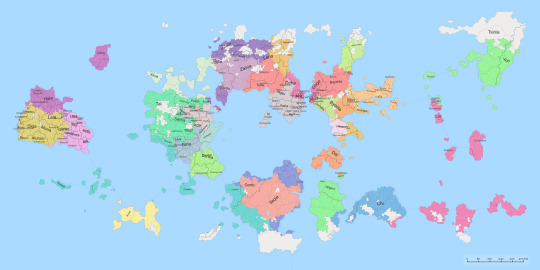
PREFACE
Greetings, this is only a mere sketch for my constructed world stuff, again... It is still a manifestation and political advocacy exercise but I would think that it is also a decent reflection of my worldview and a nice educational "grasp-the-world & iterate" method.
Granted, the following only have temporary labels due to further work yet to be done for the whole project "backend" (especially the linguistics and overtly immersive parts of it all). I am still iterating with some Civilization 5 & Stellaris playthroughs as baseline inspo, alongside a couple textual referee documents to assist this "frontend" of sorts.
So yeah... enjoy your stay.
First twelve "Major" Civs
Shoshones
Mayas
Morocco
Brazil
Poland
Incas
Babylon
Assyria
Netherlands / Venice?
Portugal
Korea
Carthage
Last eight "Major" Civs
Aremorica
Samoa
Inuit
Vietnam
Sumer
Angola
Hittites
Minoans
FourtyEight(48)-to-Sixty-Four(64) "Minor" Civs aka City-States
?
Cultures
Eyn = Levantine
Ibrad = Hungarian
Zebie = Basque
Tatari = Berber
Cao = Vietnamese
Shoshoni = Numic
Turchian = Turkish
Eqalen = Inuit
Tersun = Ruthenian
Temu = Nigerian
Hugues = English
Lueur = Mongolian
March = German
Teotlan = Nahuatl
Hawatcha = Korean
Ishtar = Mesopotamian
Taliyan = Iranian
Palche = Quechua
Aberku = Celtic
Sama = Polynesian
Medran = Castillian
Olivana = French
Bantnani = Karnataka
Syriac = Mesopotamian
Matipec = Mayan
Rzhev = Ruthenian
Matwa = Swahili
Hangzhou = Chinese
Chunhau = Cantonese
Mersuit = Inuit/Swedish
Treano = Italian
Arela = Portuguese
Hatris = Hittites / Lydians
Zapata = Byzantines / Mycenean Greeks
Nippir = Elam / Far-Eastern Mesopotamia
Irena = Minoan Greeks
Religions
Pohakantenna (Shoshoni / Numic pantheon)
Angakkunngurniq (Inuit pantheon)
Confucianism tradition (and dialects like Shinto…)
Al-Asnam (Celtic druidic pantheon)
Mwari Cult (Carib animistic pantheon)
Arianism (iterated from the defunct Christianity dialect)
Chaldeanism (Mesopotamian pantheon)
Calvinism (derived from the Protestant Reformation’s Huguenot Southern French, monotheism)
Tala-e-Fonua (Polynesian Samoan pantheon)
Hussitism (central slavic dialect of monotheism)
Jainism (communal humility & individualized ki monks culture)
Buddhism (inner way reincarnation & large monasteries)
Judaism
Zoroastrianism
Ibadiyya (Islam)
Canaanism (Carthaginian belief system)
Pesedjet (Numidan Hieroglyphics belief system)
Wakan Tanka (Blackfoot religion)
Intiism (Inca pantheon)
Tzolk'in (Mayan pantheon)
States
(~ to be written)
END
Worldbuilding revision workflow preview #1...
Galactic & meta-physical considerations (helps the mythological and Stellaris stages tremendously);
Micro-paracosms experimentations;
Stellar system conception
Interstellar neighbourhood;
Star design;
Orbits design;
Habitable planet(s) & Terrestrials;
Ice & gas giants;
Moons;
Habitable world conception
Albedo, atmospheric, tides & other key specifications;
GPlates & GProjector / geology stages;
Speculative biology / lively evolution stages;
Sapient life history simulationism runs stage (social life simulacres aka Firaxis' Civ 5 + FreeCiv);
Stellaris & post-Stellaris narratively-focused stages;
GLOSS systemic multimedia animated story-telling stage;
QGIS + OSM "present-day" geofiction stage;
Dreamworld, shifting sessions and manifestation life scriptings stage;
0 notes